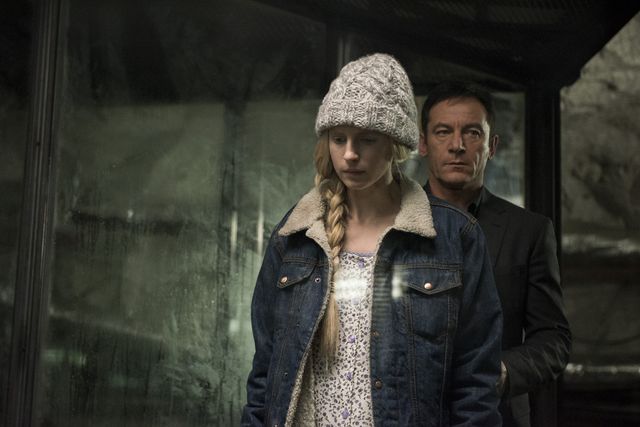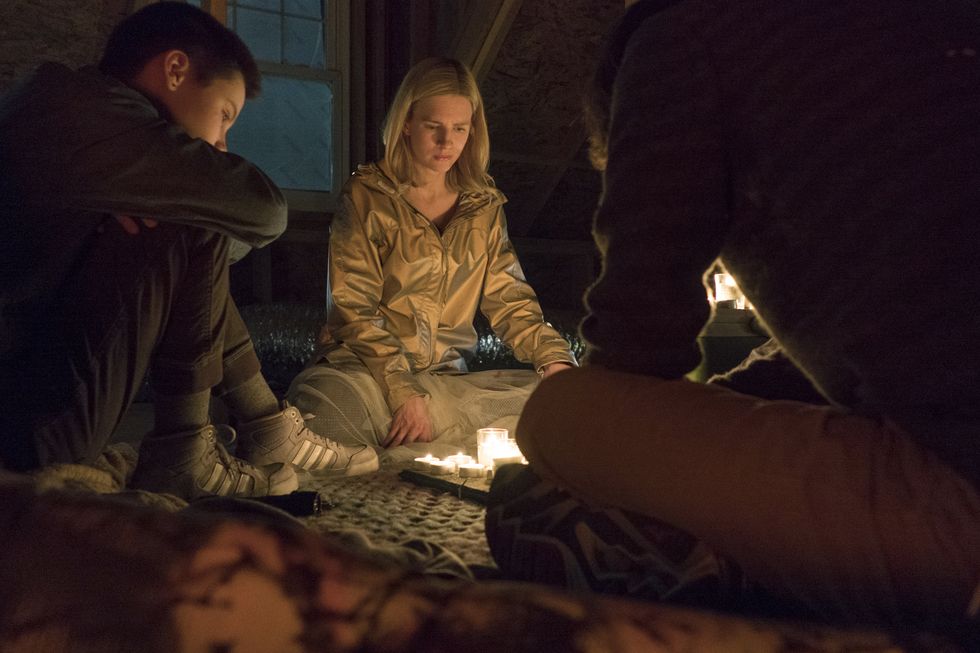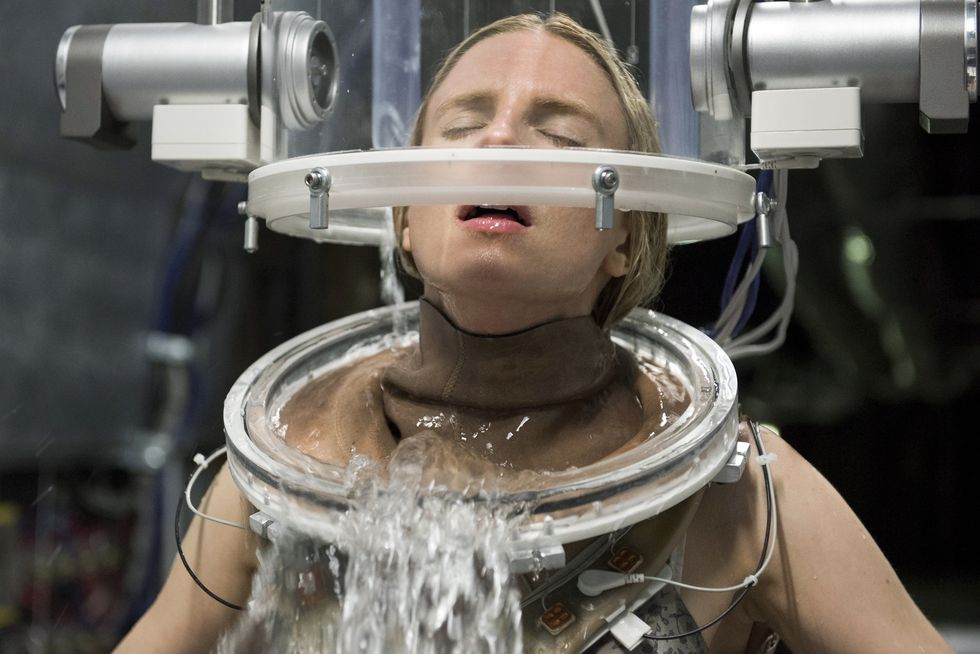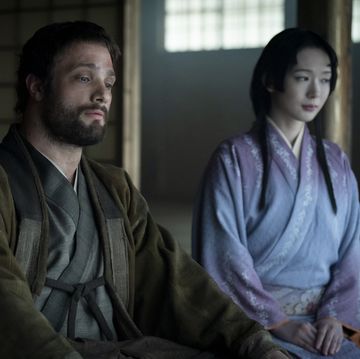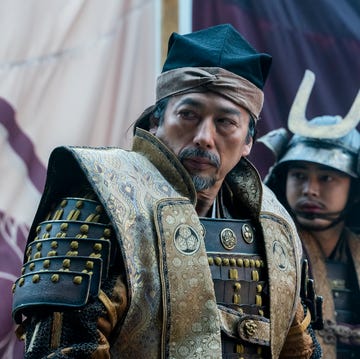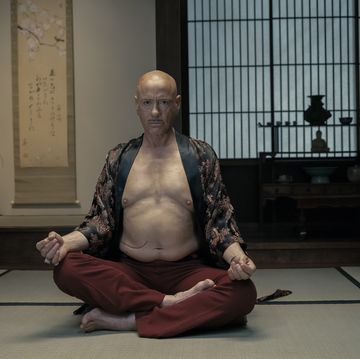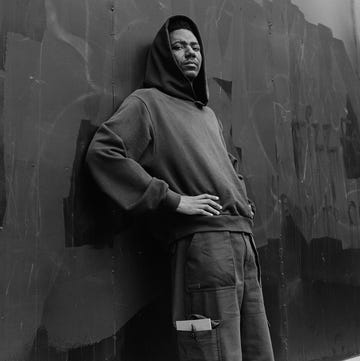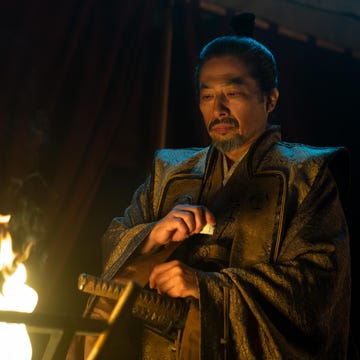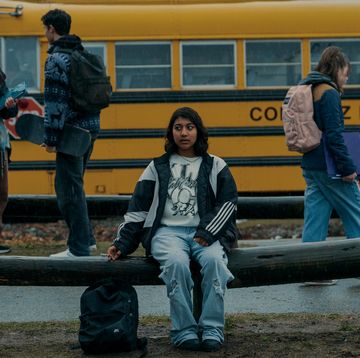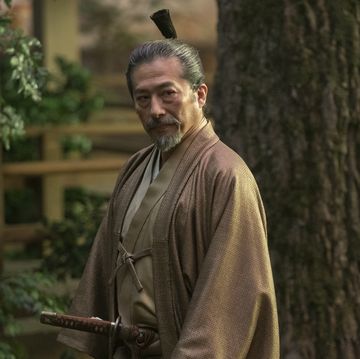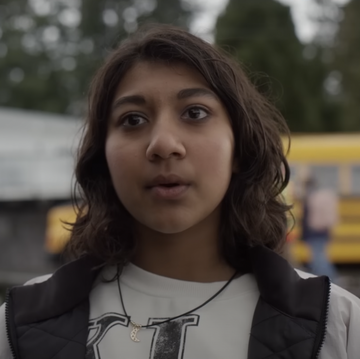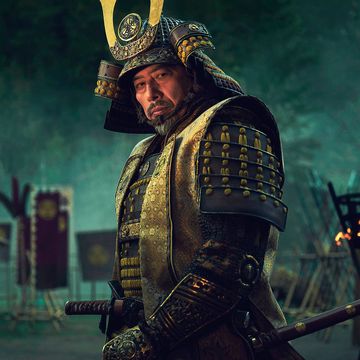The OA is a tough nut to crack. Even if you spent this weekend binge-watching Netflix's surprise new original series—which dropped its first trailer days in advance of its release last week, eschewing publicity in bravura Beyoncé style—you may still be unsure what to make of it. Critical opinion has been wildly divided between love, hate, and bewilderment, and yours may depend largely on how literally you take the show's central storyline, which straddles the boundary between the scientific and the supernatural in ways that are sometimes arresting, sometimes silly, and consistently unpredictable.
A blind young woman, Prairie (Brit Marling), who has been missing for seven years, returns home in The OA's pilot episode with her eyesight mysteriously restored—and a haunted demeanor that hints at unspeakable trauma. Struggling to reconnect with her adoptive parents, she forms a strange bond with a group of mismatched high school boys, to whom she narrates the story of her disappearance over the course of several evenings. And it's her surreal, genre-defying story–unfolding simultaneously for us on screen and for the boys as they listen–that forms the spine of what you will either love or hate about The OA.
In addition to starring, Marling co-wrote the series with her longtime collaborator Zal Batmanglij, who directs all eight episodes of the show. The pair spoke to Esquire.com about near-death experiences, Prairie as an unreliable narrator, and the power of Netflix's mystery-marketing approach.
ESQ: What was the first kernel of the idea that became The OA?
Brit Marling: The earliest seed of it was the idea that a young woman had had a very traumatic, overwhelming experience that she refuses to talk to anybody about, but she connects oddly with this group of teenage boys. And that in sharing her story this group of boys, who sort of don't have anything to do with each other and sit at opposite ends of the cafeteria, end up uniting over this ritual of nightly storytelling, and that her story ends up filling some sort of vacuum in their lives.
We were also fascinated with near-death experiences, the idea that death is such an unknown liminal space, and that how we even define it has changed so much over time. It used to be that you'd hold your hand over someone's mouth to see if breath was coming out, and now we have EKG machines to measure the heart and EEG for the brain, so our measurement of death shifts as science changes. Jason Isaacs' character Hap emerged from there, as a scientist who was on the fringes in his community, because he was exploring this space [life after death] that's often described in spiritual or religious terms. So his character was always there as this complex force of antagonism, who loses his morality in this mad pursuit of needing to know the unknown.
There was no marketing and virtually no press about The OA until a few days before its launch. Was that mystery-based campaign your pitch, or Netflix's?
BM: Zal and I were always kind of secretive about protecting it, because we'd spent so long just daydreaming all the story mathematics and plotting out the riddles of the world. And I think everybody got in on that. Netflix were excited about it, so there were no casting announcements, and the signs that would lead us to set were all in braille. It just naturally evolved that we would keep it mysterious, and let people come to the show and unravel it for themselves.
Zal Batmanglij: I don't think we ever thought about marketing, but we certainly did think about mystery. We were interested in the similarity between novels and long-form television, and we wanted to approach this more like you would writing a novel. You certainly wouldn't have all your main characters in the first chapter of a novel, and you wouldn't have a nuclear reactor of a story engine in the first chapter of a novel either. And like a novel, we did want it to climax quite precisely at the end, not just sort of finish up the storyline for the first year, but really have it be a transformative experience.
Prairie is potentially a very unreliable narrator, which makes about 75 percent of what we see on-screen open to interpretation. Did you have a definitive take on that as you were writing?
ZB: Well, it's very important that what you're seeing is not a flashback—it's the boys' interpretation of the story she's telling, and their imagination of it. The thing about stories is you have to believe them to get through them, and so even the biggest sceptic has to suspend disbelief to get to the end of the story, so we were relying on the fact that both the audience and the boys would go through that experience.
BM: In the very first chapter where we fly through French's eyes into his imagination of where her story is going—there's definitely a robust theme about storytelling, and the way metaphors or poetry can end up approximating something that is closer to a truth, even if aspects of it are fiction.
In the beginning, certainly the boys question whether or not she's a reliable narrator, but you know… When somebody's spinning a good yarn, you might want to fact-check, but the power of the story can sometimes take over, and the next thing you know you've taken one leap of faith after another.
Early on, we learn that Prairie was diagnosed as psychotic and put on medication for years. There's a pretty coherent reading of the show wherein that's true, and she's delusional, right?
BM: Yeah, completely. What's interesting about storytelling is you tend to read it in the way that reinforces your world view. Zal and I made a film called Sound of My Voice, in which a woman claims to be a time traveler. At Q&As for that film, we'd ask, "How many of you think she's a real time traveler?" And it would be a roughly 50/50 split between sceptics and romantics. I think people tend to read into it what maybe feels closest to how they see the world.
There's a point at which the show takes a definitive turn into magical realism. At the beginning of Chapter Four where Prairie has her first near-death experience and gets advice from a mystic. Did you struggle at all with making those genre shifts?
ZB: We based a lot of that stuff on actual accounts of near-death experiences, because those experiences do often mirror magical realism. We took a lot of inspiration from Raymond Moody's 1975 book Life After Life–he's a psychiatrist who interviewed 150 people who'd had NDEs, and there were so many similarities. So that particular sequence you're talking about was very much taken from a doctor's perspective on what she might have experienced.
The go-to lazy headline for The OA has been, "Is this the new Stranger Things?" Do you see any merit in that comparison?
BM: I think the biggest comparison is that Netflix is a place where a lot of young filmmakers are getting to tell robust, different kinds of stories—people who maybe began in features are finding an amazing harbor and home there, in terms of making original, long format stories.
Yeah, I guess there's a vague narrative parallel in that it's a group of teenage boys unravelling this mystery. What inspired the dynamics of that group?
BM: Zal and I spent some time traveling around to high schools in Illinois and Ohio and Pennsylvania, just sitting in the back of classrooms and interviewing kids and their teachers, following kids home to meet their parents. I think through that whole experience, we were really moved by how much it feels like young people are struggling to make sense of the direction of their lives. A lot of the old linear paths seem to have become corrupt, or broken, or don't seem to lead to the place everyone says they did.
Young people are also kind of overwhelmed by this inundation of imagery through technology—the 24/7 social networking and the bullying that comes with that, the obsession with being liked. So there was something that felt urgent to us about the idea of Prairie as an outsider, somebody on the fringes, who comes into that setting and provides a tactile, real space, and a sense of ritual and community where people are coming every night and hearing this story. That turns out to be something they needed more than they thought they did.
The ending is very much left open, so I assume you're both on board for future seasons?
BM: Oh yeah, we'd of course love to keep telling the story, and we've spent some time thinking about the mathematics of where it would go.
ZB: We planned out a larger story when we started, because we didn't want to go into it without having the larger picture planned out—I think the audience can always tell that, or feel it. But we also wanted it to be its own standalone piece. So again, I think the novel analogy works really well, it's a novel, but it could easily be a series of novels. And I think it would be best as a series of novels!
